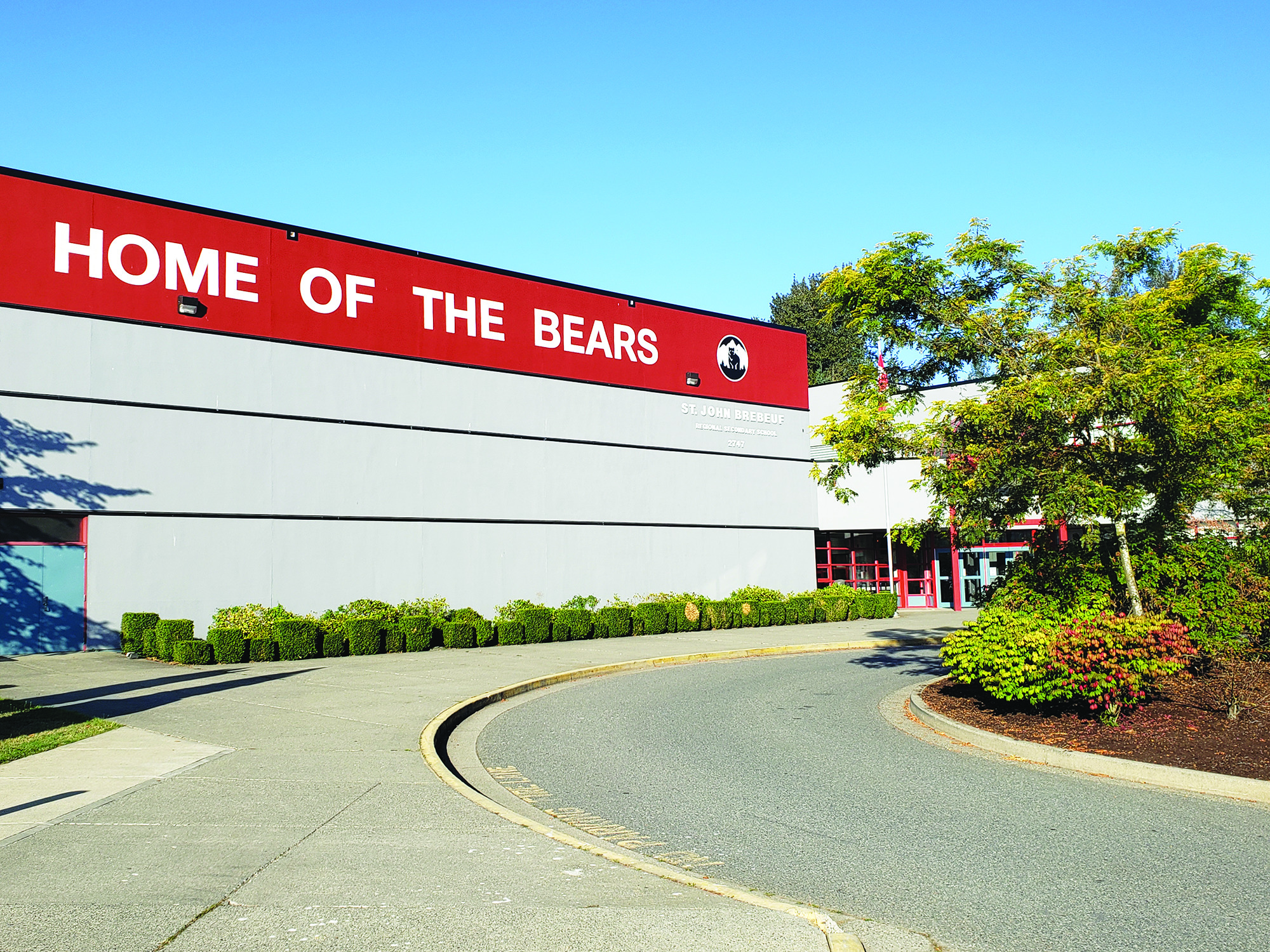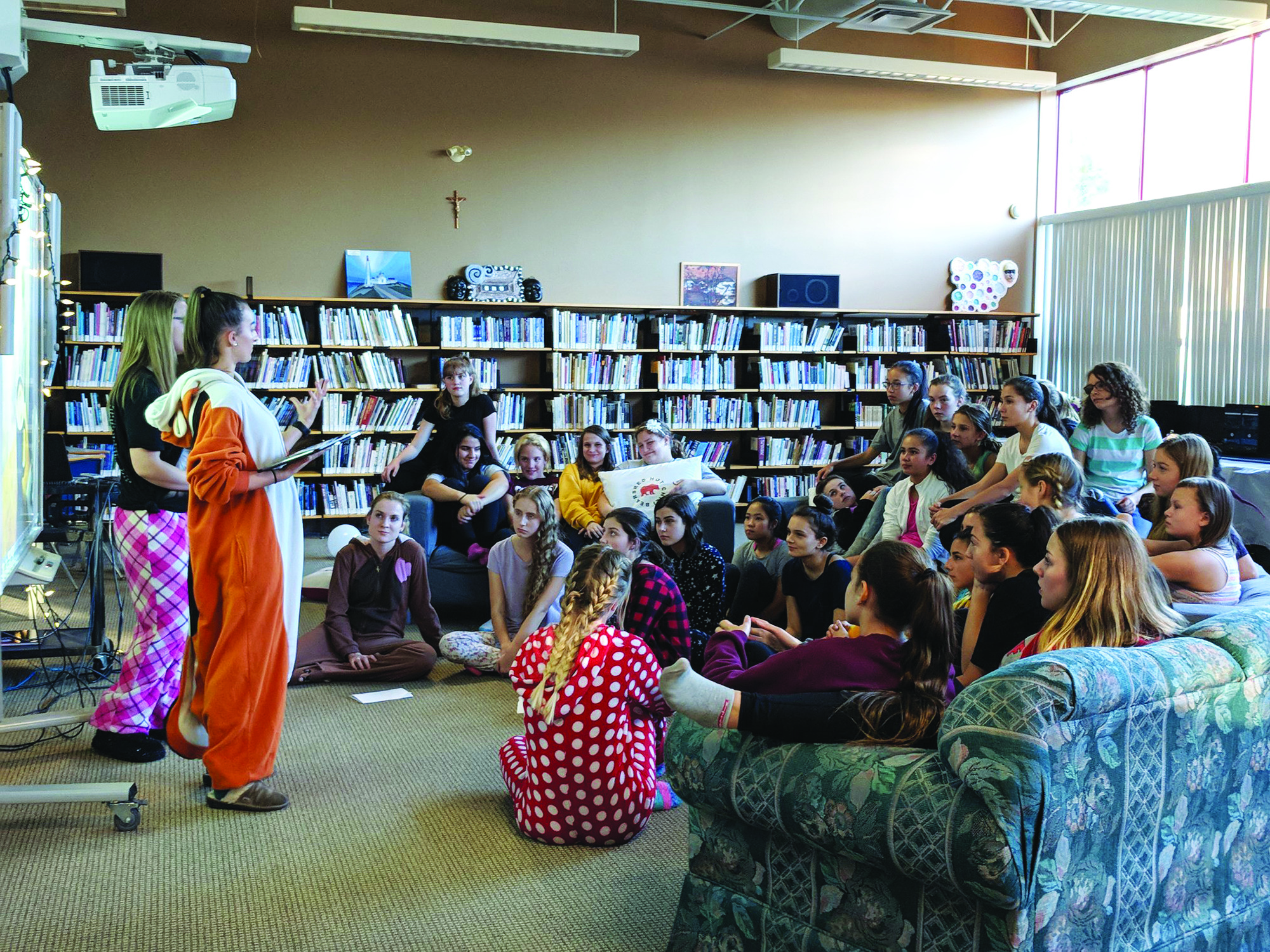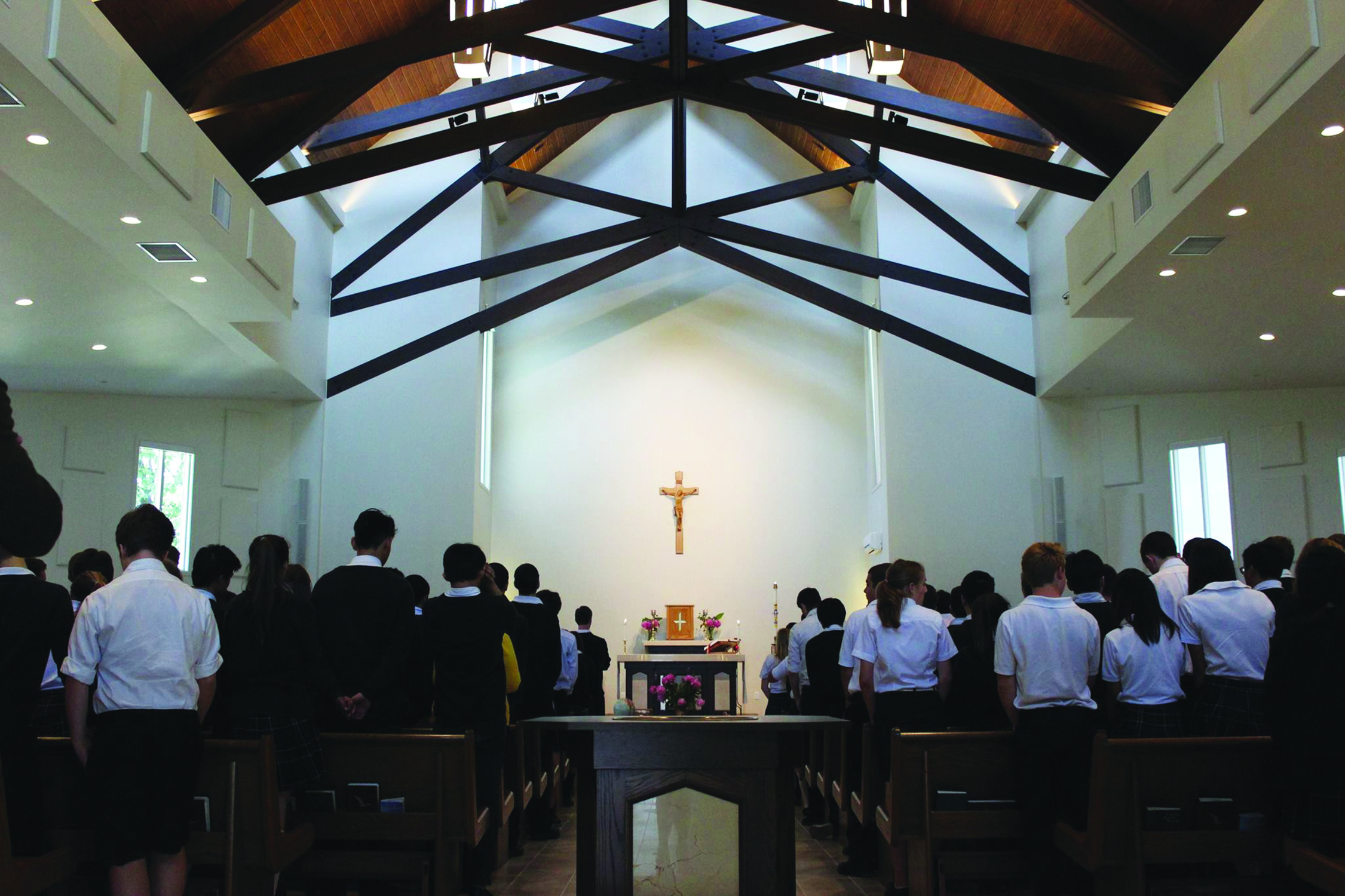Home, School, and Church as Partners in Religious and Moral Formation
The Catholic tradition views the school as working alongside the church to help parents educate their children. While parents are the primary providers of their children’s religious and moral formation, they do not undertake this significant work alone (Pontifical Council for Justice and Peace 2006). Among the most important responsibilities of educators at a Catholic school, then, is sustaining the relationship between the school and the community of faith to which it belongs.
The document, The Catholic School on the Threshold of the Third Millennium makes this point strongly: Christian schools do not provide faith-based learning to students in isolation but partner in this task with other members of the wider faith community. The Catholic tradition views the school as working alongside the church to help parents educate their children. While parents are the primary providers of their children’s religious and moral formation, they do not undertake this significant work alone Pontifical Council for Justice and Peace 2006). Among the most important responsibilities of educators at a Catholic school, then, is sustaining the relationship between the school and the community of faith to which it belongs.
“The complexity of the modern world makes it all the more necessary to increase awareness of the ecclesial identity of the Catholic school. . . . [This] is written in the very heart of its identity as a teaching institution. It is a true and proper ecclesial entity by reason of its educational activity, ‘in which faith, culture and life are brought into harmony.’ Thus it must be strongly emphasized that this ecclesial dimension is not a mere adjunct, but is a proper and specific attribute, a distinctive characteristic which penetrates and informs every moment of its educational activity, a fundamental part of its very identity and the focus of its mission. The fostering of this dimension should be the aim of all those who make up the educating community” (Congregation for Catholic Education 2000).
“It starts with a willingness to go above and beyond the call of duty. It requires a servant heart, and one that enjoys fostering the happiness and well-being of students.”
From Awareness to Action and Practice
At St. John Brebeuf (SJB), academics and extracurricular programs—such as athletics, fine arts, and social-justice activities—allow students to understand their faith more deeply and engage with it in diverse contexts. The teachers stress that these programs are essential to the students’ moral formation: “Extra-curricular clubs or activities educate a student on a different level and often have a deeper, beneficial impact on their overall view of self and others. It is a way to teach and practice empathy and servant leadership.” In addition to the athletics program, organized extracurricular activities include intramurals, band, choir, a tea club, chess, and art.
“Any time an individual feels a part of a whole rather than separate from the whole, positive well-being emerges and greater investment to the group results.”
SJB is committed to justice based on the social teachings of the Catholic Church, which calls for building a just society and living lives of holiness amid the challenges of modern society. The religious education program requires each student to invest in service hours, which are supported by a teacher-led club called Life and Justice. The students also take part in a self-directed speaker series that engages the students with each other, staff, and the world around them regarding contemporary issues.
Teachers at SJB believe that promoting students’ involvement in the life of the school has been key to encouraging their involvement in their faith communities outside school hours: “Students take what they learn through the clubs and bring it into the real world. We see a lot of students go out and join clubs and preach what they have [learned].” Many of the teachers describe this activism with great enthusiasm, explaining the various ways in which student involvement benefits the wider community. Staff and students have made it a priority to serve at the three Catholic elementary schools connected to SJB: “We invest heavily with time at our feeder elementary schools.” Some senior students volunteer with their younger peers in athletics, teaching Little Cub basketball or volleyball to grades 4–7 students, while others participate in the Cooking with the Kindergarteners program.
“We don’t look at extra-curricular activities as a chore or something that we aren’t getting paid to do. We look at it as a calling and an extension of the teaching vocation. We learn so much more about our students through these clubs and activities, which in turn makes us better equipped to relate to and teach them.”
St. John Brebeuf is supported by seven Catholic parishes in the Fraser Valley, and the school’s students volunteer with many of these parishes’ ministries and are active members of their parish youth groups. Some students are involved in Special Olympics and support young athletes. Others visit retirement homes, participate in charity organizations, volunteer in a night mission for the homeless, attend church and community events, serve at soup kitchens, or go on mission trips to developing countries. After graduation, many alumni have joined the Catholic youth ministry National Evangelization Team. Even though a significant number of the students serve through Catholic ministries, other students serve elsewhere, and teachers emphasize that all student participation in service opportunities advances the public good:
“There are a variety of programs that benefit the community, [and] these programs are run by various religious and non-religious organizations. Our students have been involved in programs run by non-Catholic groups. Students [at non-religious schools] should not be steered away from association with programs run by religious groups.”
The Role of Community in Faith Development
According to these teachers, sustaining a vibrant community of faith requires a deep understanding that students’ spiritual lives cannot be separated from their thoughts, words, and actions. “We are teaching the students that faith does not just occur within the walls of the church or in our school. It is a way of life.” A common goal of all school activities is connecting students to each other and to Christ. The whole school community prays together to open the school day, at lunch, and to close the day. The staff hold a daily prayer time, which is not mandatory but which many participate in. Club and team prayer at the start of meetings or games binds smaller groups together and unites them in purpose. The school’s chapel is open to students and staff, providing a space for prayer and meditation. Monthly Masses, in which all students and staff participate along with parents and parishioners who are able to attend, unite the community through word, sacrament, and relationship.
The school community is intentional about pursuing “higher academic, ethical, and moral standards” (St. John Brebeuf Regional Secondary School 2016), and educators note that SJB’s “culture of excellence in service initiatives” has been central to the students’ dedication to faith engagement both at the school and in their communities. This commitment to excellence includes not only students but also “willing and passionate staff who are committed to our students.” Teachers understand their relationships with students to be “fueled by the Spirit,” and they view those relationships as a crucial way to equip students to be “light in the world,” serving one another within the school and in the broader communities.
“I believe that social justice and other initiatives are more true and relevant when they are rooted in faith, that young people respond to the truth that they are taught and want to be involved because we call them to be better than they could be alone.”
“As a staff, we try to connect to our students outside of academic life. This helps build relationships with teenagers at a crucial time in their life and helps them to create positivity in their own lives. This must result in an extension to their community, because they are able to bring the light of Christ to their communities. Additionally, we are providing a different sort of example in their faith, which again extends to their own life in how they connect to their faith.”
Teachers take responsibility for befriending students that staff have identified as being “at risk.” During lunch breaks, staff go out of their way to find students “who do not have a ‘home base’ to hang out” and look for ways to give these students a sense of belonging. Teachers report welcoming students into their classrooms during lunch and enjoying casual conversations with them in the hallways between classes. These small actions during the school day may seem minor or even trivial, but they nurture a strong sense of belonging that is foundational to students’ growth within a faith community and their involvement in service activities beyond school hours: “If the students are happy with their school life, then they will be happy outside of school, and that carries on to others in the community.” For this reason, teachers at SJB stress the importance of providing a variety of extracurricular activities in which as many different types of students as possible can get involved. At the heart of these efforts is a commitment to inviting every student and staff member into the community of faith at St. John Brebeuf. “Christianity is a religion focused on community and sharing in that community. Thus, because we have a focus on community (through prayer, communion, etc.), we build a sense of community from all aspects of our schools.”
Key Takeaways
- Supporting students in their faith at school encourages them to live out their faith in their communities outside of school.
- Offering a range of athletic, fine arts, and social justice activities provides opportunities for students with various interests, skills, and passions to explore their faith in diverse contexts.
- Promoting an inclusive and vibrant student life advances the good of a school’s surrounding community—when all students feel a strong sense of belonging in and commitment to their communities, they are empowered to serve these communities.
- The commitment of staff is essential to the moral and faith formation of all students and to creating a culture of service in a school’s student body.
- Making student life flourish at Christian schools requires understanding that the spiritual lives of students and staff are tied to formation in thoughts, words, and actions in everyday life.
“The students who attend and live student life exude a joy which cannot help but impact those they encounter in the community. I witness several students who are full of life and desire to be involved, and I assume that the student life here has been part of their journey.”
References
Bergmark, U., and C. Kostenius. 2018. “Appreciative Student Voice Model—Reflecting on an Appreciative Inquiry Research Method for Facilitating Student Voice Processes.” Reflective Practice 19, no. 5:623–37.
Calabrese, R. 2015. “A Collaboration of School Administrators and a University Faculty to Advance School Administrator Practices Using Appreciative Inquiry.” International Journal of Educational Management 29, no. 2:213–21.
Congregation for Catholic Education. 1997. “The Catholic School on the Threshold of the Third Millennium.” The Vatican. http://www.vatican.va/roman_curia/congregations/ccatheduc/documents/rc_con_ccatheduc_doc_27041998_school2000_en.html
Gordon, S.P. 2016. “Expanding Our Horizons: Alternative Approaches to Practitioner Research.” Journal of Practitioner Research 1, no. 1: article 2.
Pontifical Council for Justice and Peace. 2006. Compendium of the Social Doctrine of the Church. The Vatican. http://www.vatican.va/roman_curia/pontifical_councils/justpeace/documents/rc_pc_justpeace_doc_20060526_ compendio-dott-soc_en.html
Ryan, F.J., M. Soven, J. Smither, W.M. Sullivan, and W.R. Van Buskirk. 1999. “Appreciative Inquiry: Using Personal Narratives for Initiating School Reform.” The Clearing House 7, no. 3:164–67.
St. John Brebeuf Regional Secondary School. 2016. “Welcome from the Principal.” https://www.stjohnbrebeuf.ca/about-us/welcome-fromprincipal/
Stavros, J., L. Godwin, and D. Cooperrider. 2015. “Appreciative Inquiry: Organization Development and the Strengths Revolution.” In Practicing Organization Development: A Guide to Leading Change and Transformation, edited by W. Rothwell, R. Sullivan, and J. Stavros, 96–115. 4th ed. Hoboken, NJ: Wiley.
Tittle, M.E. 2018. Using Appreciative Inquiry to Discover School Administrators’ Learning Management Best Practices Development. Walden Dissertations and Doctoral Studies Collection at ScholarWorks. Minneapolis: Walden University.
Waters, L., and M. White. 2015. “Case Study of a School Wellbeing Initiative: Using Appreciative Inquiry to Support Positive Change.” International Journal of Wellbeing 5, no. 1:19–32.
Zepeda, S.J., and J.A. Ponticell. 2018. The Wiley Handbook of Educational Supervision. Hoboken, NJ: Wiley-Blackwell.






